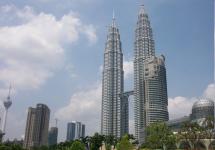Online board of arrivals and boards of departure airport Bristol (BRS).
The most up-to-date information on flight times and possible delays is usually located at online scoreboard arrival and online board of departure of the official website of Bristol airport (BRS):. Also, on the official website of the BRS airport, you can usually find information about the route to the airport, information about parking on site, a diagram of the airport itself, information about services, rules and other reference information for passengers.Bristol Airport is a commercial airport serving Bristol and South West England with 90 different destinations. The airport has one terminal with a capacity of approximately 5 million passengers per year.
Bristol Airport Arrivals and Departures Board
Online scoreboard of arrivals and departures on the airport website. Below is the airport's online scoreboard from Yandex.Schedule service:
Bristol airport map
How to get to Bristol airport
Bus
The Airport Flyer Express Link is the only bus linking the train station, bus station and Bristol airport. The bus runs daily and around the clock. An adult ticket for such a bus costs 11 pounds, a child ticket costs 7 pounds. Route map and additional information can be found.
There is a direct bus from South Wales to Bristol Airport, which costs £ 10 one way. Tickets can be purchased directly on the bus. Route on the airport website.
Train
If you arrive in Bristol by train, you can take the Airport Flyer Express Link bus from Bristol Temple Meads Railway Station to the airport, which runs every 10 minutes.
Taxi
Cars and minibuses taxis Checker Cars are on duty at the airport parking lot and provide their services around the clock. You can order a taxi by calling 01-275-475-000.
Taxi, transfer from Bristol airport
Finding a taxi from Bristol airport using the KiwiTaxi service: car options (economy, comfort, minivan), directions, prices.
In 1927, a group of Bristol citizens raised £ 6,000 through a subscription to open an aero club at Filton Airfield. By 1929, the flying club had become popular, and it was decided that the farm, located on the site of a farm in Whitchurch (en: Whitchurch, Bristol) near Bristol, would become an airport. In 1930, Prince George, son of King George V, opened Bristol Airport, which became the third such airport in the UK. Passenger traffic grew from 935 in 1930 to over 4,000 in 1939.
During World War II, Bristol Airport was the UK's only civilian airport, which meant that all flights normally bound for London ended in Bristol. The British Overseas Airways Corporation operated flights from Witchurch to Croydon and Gatwick. She flew to Lisbon and some other neutral countries. Whitchurch continued to operate after World War II, but the arrival of heavier post-war airliners necessitated an extension of the runway. However, this was very difficult due to the proximity of private estates.
As a result, in 1955 it was decided to create a new airport at Lulsgate airfield near Redhill (en: Redhill, Somerset), on the site of the former RAF airbase, which in peacetime functioned as a glider station. New airport named Bristol Lulsgate airport, it was opened in 1957 by Marina, Duchess of Kent. In its first year of operation, 33 thousand people used the services of the airport. In 1963, the length of the runway was increased, and in 1965 the airport terminal was rebuilt. In 1968, 460 sq. m. building additionally. In 1974, Court Line went bankrupt, resulting in a drop in passenger traffic.
By 1980, 17 charter airlines were operating at the airport. In 1984, an international departure hall, duty-free shops, a 24-hour bar, an arrivals hall and a short-term car park were built. Bristol Airport plc was formed on April 1, 1987 to become the airport operator; all municipal employees at the airport were transferred to work for this company. The operations and net assets of Bristol Airport were transferred from the Bristol Municipal Authority to the new company. Over the next few years, the business grew to over 100,000 passengers per month (summer 1988). Credit for the airport's rapid growth is credited to the work of managing director Le Wilson, who died in a car crash in November 1995.
In 1996 Bristol Airport was sold by Bristol City Council. In March 1997, it received its current name - international Airport Bristol... In December 1997 51% of the airport was sold to FirstGroup plc, the remaining 49% remained with the municipality of Bristol. The new terminal building was built in April 1999 and opened in March 2000. In 2000, the annual passenger turnover for the first time exceeded two million.
The airport was bought by Macquarie Bank and Cintra in January 2001 for 198 million ft. Art. Passenger traffic rose to three million in 2002, largely due to the launch of low-cost operator Go Fly. The expansion of easyJet's operations subsequently also led to a significant increase in passenger traffic. In May 2005, Continental Airlines opened a direct flight from Bristol to



